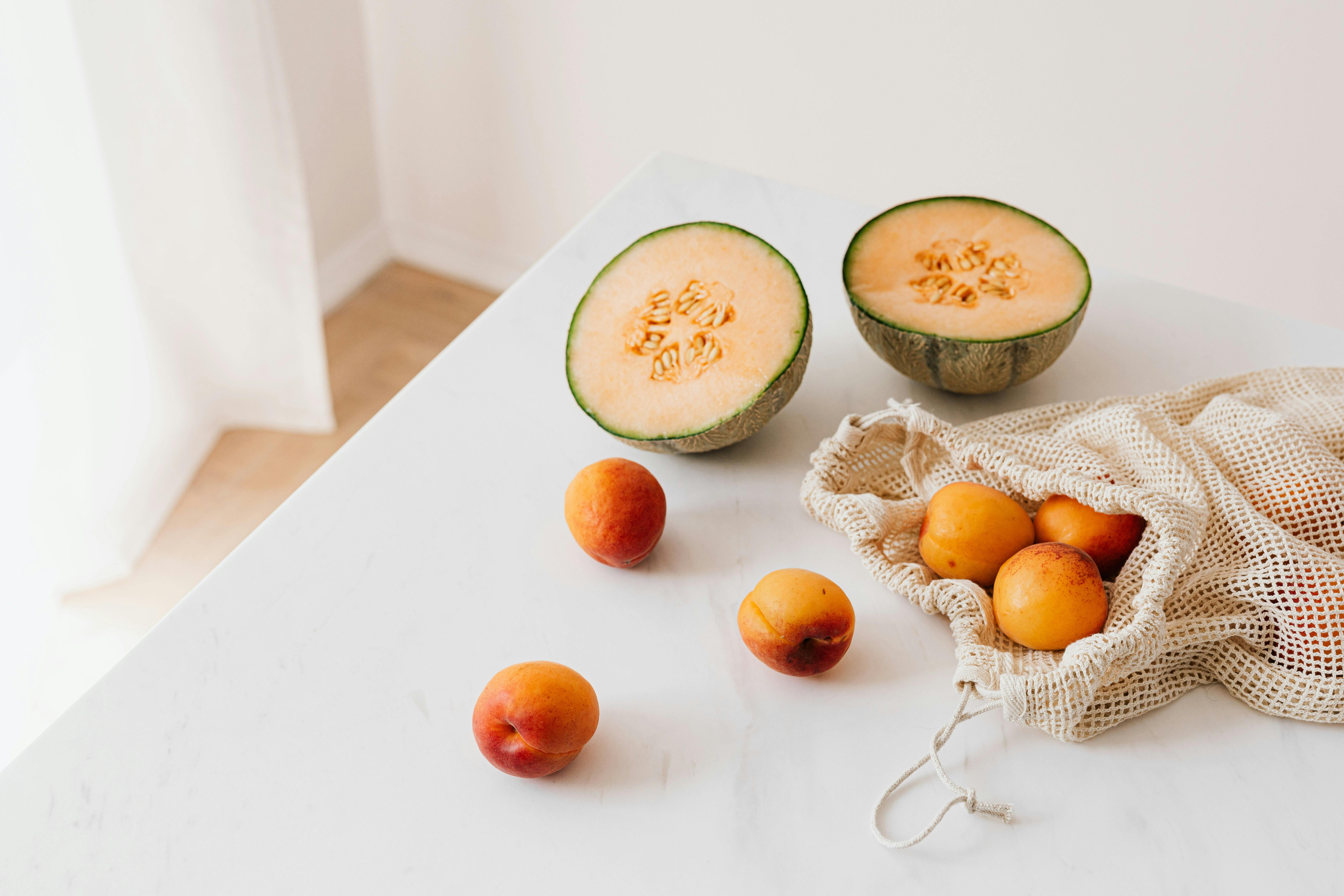Snake Fruit, or Salak, is a unique and delicious tropical fruit that can be found in Southeast Asia. Its spiny, scaly exterior might make it look intimidating, but don’t let that stop you from trying it! Eating Snake Fruit is simple and relatively easy once you know what to do. Here is a guide on how to eat Snake Fruit.Snake Fruit is a tropical fruit native to Southeast Asia. It is also known as Salak or Salacca zalacca and is characterized by its brown, scaly skin which resembles that of a snake. The flesh of the fruit is sweet and acidic in flavor with a texture similar to that of an apple. It can be eaten fresh or used to make juice or jam.
What Does Snake Fruit Taste Like?
Snake fruit, also known as salak or salacca zalacca, is a tropical fruit native to Indonesia and Malaysia. It’s characterized by its unique scaly skin, which gives it its name. The flesh inside is sweet and juicy, with a hint of tartness. The taste is often described as a mix between a pineapple and an apple, though some say it tastes more like a pear. Its flavor profile is quite complex and can vary depending on the variety. Snake fruit has a thin skin that can be peeled away to reveal its white fleshy interior. Inside the white flesh are juicy seeds that have a mild nutty flavor. The texture of snake fruit is usually crunchy and slightly fibrous. It can be eaten fresh or used in juices and other recipes for added sweetness. While the taste of snake fruit may take some getting used to, it’s definitely worth trying at least once!
How To Identify A Ripe Snake Fruit
Snake fruit, also known as salak, is a tropical fruit native to Indonesia. It is characterized by its rough, scaly skin and sweet-sour flavor. In order to enjoy the full flavor of the fruit, it is important to select ripe ones when buying them. Here are some tips on how to identify a ripe snake fruit:
The first thing you should look for when selecting snake fruits is the color. A ripe snake fruit will usually have a golden-brown or yellowish-brown color. The scales should also be slightly raised and the ridges should be easily felt. Avoid fruits with green or grayish-brown colors as these are usually unripe or overripe fruits.
The next thing you should do is check for its texture. A ripe snake fruit will feel firm but not too hard when touched. If it feels too hard, then it may be unripe and if it feels too soft, then it may already be overripe. You should also check for any bruises or soft spots on the fruit as these are signs that it has been mishandled and may not taste as good as a fresh one.
Finally, you should also take note of its smell. A ripe snake fruit will have a distinct sweet smell that will become more intense when you press down on it gently with your fingertips. An unripe or overripe one will have little to no smell at all so be sure to avoid these ones if possible.
By following these tips, you can easily identify a ripe snake fruit and enjoy its sweet-sour flavor at its best!
How To Cut A Snake Fruit
Snake fruit, also known as Salak, is a tropical fruit with a unique appearance and a sweet, tart flavor. It is native to Southeast Asia but can be found in other parts of the world. The skin of the fruit is scaly and brown, resembling the skin of a snake, thus giving it its name. The flesh beneath the skin is white and juicy with small black seeds. To cut a snake fruit, start by washing it with water to remove any dirt or debris from the scales. Then, use a sharp knife to make an incision in the top of the fruit, cutting around the center of the stem. Peel off the skin and discard it. Slice each side of the fruit into thin wedges and enjoy!
Snake fruit can be eaten raw or used in recipes for desserts or savory dishes. It is high in vitamin C and other nutrients like potassium and magnesium. When selecting a snake fruit at the store or market, look for one that is firm to the touch with no bruises or soft spots on its skin. Store it in an airtight container in your refrigerator for up to two weeks before consuming it.
How To Peel A Snake Fruit
Snake fruit, also known as salak, is a popular tropical fruit in Southeast Asia. It is known for its unique scaly skin and sweet-sour taste. Peeling a snake fruit can seem intimidating, but it’s actually quite easy. Here’s how to do it:
Start by washing the snake fruit with warm water and scrubbing it gently with a soft brush to remove any dirt or debris. Next, hold the snake fruit in one hand and use your other hand to peel away the spiny scales. Start from the top and work your way down, taking care not to tear the flesh beneath. Once you have removed all of the scales, you can cut off both ends of the snake fruit and then slice it open lengthwise.
Inside you will find three lobes containing edible flesh and seeds. Carefully peel away any remaining scales on each lobe before slicing or scooping out the flesh. The edible part of the Snake Fruit is sweet and juicy, so enjoy!

Snake Fruit Benefits
Snake fruit, also known as salak or salacca zalacca, is a tropical fruit native to Indonesia. It has a spiny, scaly outer skin and a sweet fleshy interior. Snake fruit is rich in essential vitamins and minerals, making it a healthy addition to any diet. It also has several potential health benefits, including improved digestion, weight loss, and better blood sugar control.
Snake fruit contains high amounts of dietary fiber which helps to promote healthy digestion and regularity. Dietary fiber adds bulk to the stool and helps speed up its passage through the intestines. This can help to reduce constipation and other digestive issues such as bloating and cramps. Fiber can also help you feel fuller for longer after eating, which may aid in weight loss.
Snake fruit is also high in antioxidants which can help protect against cellular damage from free radicals that can lead to disease and aging. Antioxidants can also help boost the immune system and protect against viruses and bacteria that cause illness. Additionally, snake fruit contains high levels of vitamin C which helps keep skin looking youthful by reducing wrinkles and age spots.
Lastly, snake fruit is known for its ability to improve blood sugar control by slowing down carbohydrates digestion which helps prevent spikes in blood sugar levels after eating a meal containing carbohydrates. This makes it an ideal food for people with diabetes or who are trying to manage their blood sugar levels.
What Are The Side Effects Of Eating Snake Fruit?
Eating snake fruit can have some negative side effects, especially if consumed in large amounts. Some of the most common side effects include digestive issues such as abdominal pain, nausea, vomiting, and diarrhea. Additionally, it is known to cause allergic reactions in some people who are sensitive to the compounds found in the fruit. Eating too much snake fruit can also lead to an upset stomach and even heartburn.
In addition to these physical side effects, eating snake fruit may also produce psychological effects. It has been known to cause sleep problems and can affect moods negatively, leading to irritability, anxiety, and depression. People who consume too much of the fruit may experience a decrease in energy levels and a lack of focus or concentration.
Due to its high sugar content, consuming large amounts of snake fruit can also increase the risk of diabetes and other metabolic disorders. The sugar found in the fruit can cause a spike in blood sugar levels if not consumed in moderation. Furthermore, the high level of natural acids found in snake fruit can cause acid reflux or heartburn if eaten too often or in large quantities.
It is important to note that while these side effects are potential risks associated with eating snake fruit, they are generally mild and do not pose a serious health risk unless one consumes large amounts over an extended period of time. Nevertheless, it is still recommended that you consult with your doctor before consuming this exotic fruit on a regular basis.
What is Snake Fruit?
Snake Fruit, also known as Salak or Salacca zalacca, is a tropical fruit native to Indonesia. It has a unique texture and flavor that make it a popular snack throughout Southeast Asia. The fruit has a thick, scaly skin with three distinct lobes that resemble the scales of a snake. Inside, the flesh is white with edible seeds and tastes sweet and tangy. Snake Fruit can be found in local markets and specialty stores across Southeast Asia.
How to Prepare Snake Fruit
To prepare Snake Fruit, you will need to first peel away the scaly skin with a knife or vegetable peeler. Cut the fruit into slices or cubes and discard any seeds you find. If desired, you can sprinkle some sugar over the fruit for added sweetness. Once prepared, the fruit can be eaten as-is or used in recipes such as salads, smoothies, desserts, and more.
How to Eat Snake Fruit
Snake Fruit can be enjoyed raw or cooked. The simplest way to eat it is to simply peel away the skin and enjoy it plain or sprinkled with sugar for added sweetness. It can also be cut into slices or cubes and added to salads for an extra crunchy texture. For those who prefer cooked dishes, Snake Fruit can be boiled, stir-fried, stewed, steamed, or grilled for extra flavor.

Conclusion
As you can see, eating snake fruit is easy and can be a tasty way to get your daily dose of vitamin C. The best way to enjoy the fruit is to let it ripen before eating it raw or adding it to a smoothie. And if you’re feeling adventurous, you can also try boiling or frying the fruit as part of a savory dish. No matter what method you choose, snake fruit is an excellent addition to any diet and can add an interesting twist to your meals.
So the next time you find yourself in a tropical country, don’t forget to give this special fruit a try. You won’t be disappointed!



